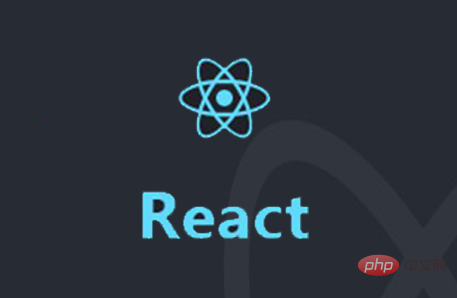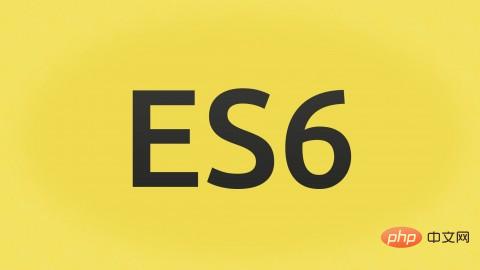Home > Article > Web Front-end > What are react and es6
react is a declarative, efficient and flexible JavaScript development framework launched by Facebook for building user interfaces; it provides programmers with a model in which sub-components cannot directly affect outer components. When data changes Efficient updates to HTML documents and clean separation between components in modern single-page applications. es6 is the next version standard of JavaScript. Its goal is to make the JavaScript language can be used to write complex large-scale applications and become an enterprise-level development language.

The operating environment of this tutorial: windows7 system, ECMAScript 6&&react18 version, Dell G3 computer.
react.js is a JavaScript development framework launched by Facebook for building user interfaces.
React is a declarative, efficient and flexible JavaScript library for building user interfaces. React allows you to combine short, independent code snippets into complex UI interfaces. These code snippets are called "components".
Because the design idea of React is extremely unique, it is a revolutionary innovation, has outstanding performance, and the code logic is very simple. Therefore, more and more people are beginning to pay attention to and use it, thinking that it may be the mainstream tool for web development in the future.

#React is an open source JavaScript library that provides views of data rendered into HTML. React views are typically rendered using components that contain other components specified in custom HTML tags. React provides programmers with a model in which child components cannot directly affect outer components, efficient updates to HTML documents when data changes, and clean separation between components in modern single-page applications.
The advantages of React are:
More suitable for large applications and better testability
Web and mobile native APP take all
A larger ecosystem, more support and easy-to-use tools
More suitable for medium and large projects
es6 full name is ECMAScript6 (the 6th version of ECMAScript), which was released in 2015 The JavaScript language standard officially released in June 2015 is officially called ECMAScript 2015 (ES2015).
ECMAScript 6 has basically become the industry standard, and its popularity is much faster than ES5. The main reason is that modern browsers support ES6 very quickly, especially Chrome and Firefox browsers, which already support Most features in ES6.
Since then, ECMA Script has released a major version every year to add some important features, which we call ES6.

Understand the relationship between ES and JS
ES = ECMAScript is a 'standard' for dynamic scripting languages, JS = JavaScript is the standard, default, and mainstream 'implementation' of ES. Due to trademark rights issues, the language standard formulated by the European Computer Association cannot be called JS, but can only be called ES;
The purpose of the new ES6 standard is: JS can be used to develop large-scale web applications and become an enterprise-level development language. The enterprise-level development language is: suitable for modular development and has good dependency management;
Why should you learn ES6? What is ES6 used for?
ES5 cannot meet the current situation where the front-end is becoming more and more complex and huge. It can be said to be outdated. ES6 is an enhancement and upgrade to ES5.
1. Mainstream browsers have fully supported ES6
2. Newer front-end frameworks in the industry have fully used ES6 syntax
3. WeChat applet , uni-app, etc. are all based on ES6 syntax
4. Starting from employment, small and medium-sized companies, full stack, one more skill on the resume, and the trial period can also get started faster.
Variable
Object-oriented
1. {pojo}(实例变量、实例方法、get、set)
2. function(实例变量、实例方法、prototype、apply、call)
3. class(实例变量、实例方法、prototype、extends、super)prototype
Only functions and classes Only prototypes exist, and their significance lies in dynamically adding instance variables and instance methods and implementing inheritance.
Inheritance
function Person(name,age){ /* 父类 */
this.name = name || 'father'; //实例变量
this.namesonF = this.nameson;
this.age = age;
this.talk = function(){alert("talk");}; //实例方法
};
function Son(name){ /* 子类 */
this.nameson = name || 'son';
// Person.call(this,'name',18); //继承:构造继承,复制父类的实例属性给子类,不能继承原型属性/方法
Person.apply(this,['name',18]); //继承:构造继承,复制父类的实例属性给子类,不能继承原型属性/方法
}
// Son.prototype = new Person("zhangsan",19); //继承:原型链继承,父类的实例作为子类的原型,拷贝属性两次,不合理
Son.prototype = Person.prototype; //继承:原型链继承,父类的实例作为子类的原型
Person.prototype.publicParam="param1"; //动态添加实例变量
Person.prototype.talk=function(){alert("talk");} //动态添加实例方法
var son = new Son(); //实例化对象,调用构造函数(constructor)class Point {
constructor(x, y) {
this.x = x; //实例变量
this.y = y;
}
}
class Son extends Point {
constructor(z, w) {
super(z,w);
this.z = z; //实例变量
this.w = w;
}
}
var son = new Son(1,2);arrow functions Arrow function is a new syntax added in ES6, which is similar to Java's lambda and scala's functional expression. The syntax is very similar
var single = a => console.log(a);
var single = (a) => (console.log(a));
var single = (a, b) => {console.log(a + b)};
var single = (a, b) => {return a + b};template string Template String, new syntax for string concatenation
var templateStr = () => {
var str1 = "adsf\nsdfa";
var template1 = `destructuring Reconstruction/deconstruction, syntax for variable interaction
var destructuring = () => {
var [a,b,...c]=[1,2,3,4,5,6,7,8,9,10];
let [temp="replaceString"] = ["tempString"];
let [age2, [{name: fname},{age: fname2="replaceString"}]] = [20, [{name: 'qc'},{}]];
const [aa,bb,cc,dd,ee,ff]="hello";
let {name="replaceName",age,id}={name:'cursor',age:19,id:'vc6dfuoc91vpdfoi87s'};
let {type:tipType,min:minNumber}={type:'message',min:20};
let {sin,cos,tan,log}=Math;
var fun = function({x,y}={}){return [x,y];}
fun({x:100,y:2});
[a,b]=[b,a]; //交换
var map = [1,2,3]
var map=new Map();
map.set("id","007");
map.set("name","cursor");
for(let [key,value] of map){}
for(let [key] of map){}
for(let [,value] of map){}
var arr = [1,2,3,4]
for(let val of arr){val}
}arguments Actual parameters, variables added in ES6 to directly read parameters
function argumentsTest(a,b) {
for(let val of arguments)
{console.log(val)
}
}The above is the detailed content of What are react and es6. For more information, please follow other related articles on the PHP Chinese website!